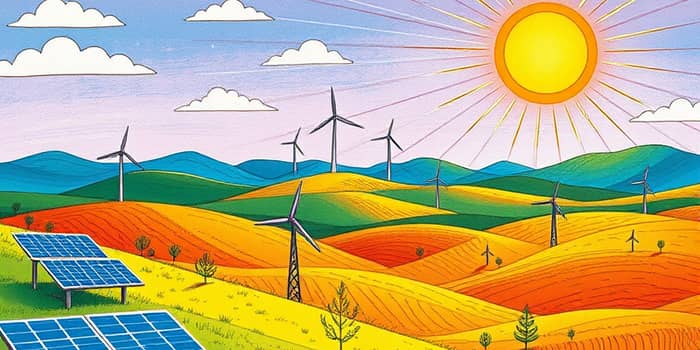
The global energy landscape is undergoing a profound transformation as countries, businesses, and communities come together to drive a monumental shift toward clean power. Bolstered by ever-stronger government action, investment in renewable sources is soaring, reshaping economies and powering a more sustainable future. This article explores the forces behind this surge, the key players, and how individuals and organizations can join the movement.
According to recent forecasts, record $3.3 trillion in investments will flow into the energy sector by 2025. Of that staggering sum, an estimated $2.2 trillion is earmarked for clean energy—covering renewables, nuclear, grids, storage, low-emission fuels, efficiency, and electrification. This is double the amount being invested in traditional oil, gas, and coal, which are expected to receive around $1.1 trillion.
Solar energy leads the charge, with investment projected to hit $450 billion in 2025—the highest single-category figure in the entire energy realm. Solar PV now outpaces oil production investments for the first time, cementing its role as the cornerstone of the global energy transition. Meanwhile, investment in low-emission power has nearly doubled in the last five years, signaling a profound market realignment toward net-zero goals.
At the heart of this renaissance lies an unprecedented policy backing for renewables. Landmark U.S. measures like the Inflation Reduction Act (IRA) and the Infrastructure Investment and Jobs Act (IIJA) have unlocked $227 billion in public and private commitments to wind, solar, storage, and hydrogen over the past two years—of which $100 billion is already in motion.
Even amid broader economic uncertainties and geopolitical tensions, governments are redoubling efforts to secure energy independence and meet skyrocketing electricity demand. As Dr. Fatih Birol of the IEA observes, “Ten years ago fossil fuel investment was higher than investment in electricity. Now, it is exactly the opposite.”
China has emerged as the largest single investor in global energy, focusing heavily on solar PV capacity. In the United States, states such as California, Texas, and Florida have drawn major shares of capital by coupling ambitious decarbonization targets with streamlined permitting processes.
Elsewhere, South Africa’s just-transition strategies illustrate how policy can drive inclusive growth, ensuring that communities most affected by coal phase-outs benefit from new clean energy jobs and infrastructure.
The renewable sector is not only a cornerstone of decarbonization but also a key job creator worldwide. Projections indicate more than 40 million renewable energy jobs by 2050, spanning manufacturing, installation, operation, and maintenance.
In low-income and disadvantaged communities, clean energy deployment supports sustainable economic and social prosperity. From rooftop solar programs that lower electricity bills to large-scale wind farms that revitalize rural economies, the benefits are sweeping and long-lasting.
Beyond the figures lie communities transformed by access to reliable, affordable power. In remote villages, distributed solar paired with battery storage is powering schools and clinics for the first time. In urban centers, rooftop arrays are reducing burdens on overstressed grids and putting customers in control of their energy bills.
Entrepreneurs and cooperatives are leading microgrid initiatives, offering resilience against outages and creating local ownership models. These stories exemplify how national energy security and climate goals intersect with daily lives—offering hope and opportunity.
Despite the momentum, obstacles remain. Supply chain constraints, permitting bottlenecks, and evolving investor sentiment can slow projects. Some financiers are in a “wait-and-see” mode due to shifting economic conditions, but the majority of pipelines remain robust.
Next-generation innovations—like emerging advanced battery technologies and green hydrogen production—will be pivotal to integrate higher shares of renewables and decarbonize hard-to-abate sectors. Continued public support and private capital will be essential to tackle these challenges and keep the transition on track.
Every stakeholder has a role in sustaining this momentum. Here are practical steps to contribute:
By raising your voice, allocating capital thoughtfully, and embracing clean technologies in your own life, you become part of a global movement driving toward a cleaner, more resilient energy future. The surge in renewable energy investments is more than a financial trend—it is a testament to human ingenuity and collective will. Let us harness this energy, together, to power the world sustainably for generations to come.
References













